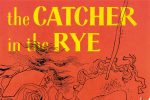Ever since the 1950s, summer romance has been a constant trend, with countless teenagers and young adults yearning for a romantic connection during the warmer months. That being said, “summer lovin’” has taken on an entirely new meaning in recent years, as a “summer steady” has quickly evolved into a “summer hook-up.”
No one was more against inauthenticity than American author J.D. Salinger, whose short stories are primarily centered around romantic connections during the summer season. Put frankly, Salinger would turn over in his grave if he’d witnessed today’s summer hook-up culture, as genuine romance is essentially nonexistent.

Take summer vacations, for example, and how college-age boys and girls are often eager to find one-night stands, especially when they find themselves in a new area. I’ve known several boys who’ve downloaded the Tinder app when they’re in a foreign city, anxious to find an attractive girl to hook up with.
J.D. Salinger, on the other hand, viewed new, unexplored destinations as prime occasions for true, authentic romance with a beautiful girl worth traveling for: “Probably for every man there is at least one city that sooner or later turns into a girl. How well or how badly the man actually knew the girl doesn’t necessarily affect the transformation. She was there, and she was the whole city, and that’s that.”
Rather than traveling to a city for a meaningless hook-up, Salinger believes that one’s love interest should define the city itself and consume the experiences had within it.
In one of Salinger’s lesser-known short stories, “A Girl I Knew,” the main protagonist, John, meets a beautiful young girl when he visits Europe for the summer, and he arranges for her to tutor him in German.
Although he doesn’t know her too well, mostly due to the language barrier between them, he meets with her whenever possible, and she comes to define the city of Vienna for him. Her name is Leah, and John’s first impression of her would be unheard of in the 21st century: “In brief, she was probably the first appreciable thing of beauty I had seen that struck me as wholly legitimate.”
As the story continues, and John spends more time with Leah, her beauty enhances, for he eventually states that her beauty “was too great for the size of the room.”
Not only is his untainted attraction to Leah rare, but John’s awe and appreciation for her is completely absent in today’s hook-up culture: “She wasn’t doing a thing that I could see, except standing there leaning on the balcony railing, holding the universe together.”

Another point worth noting is Salinger’s appreciation for gestures of affection, such as hand-holding, warm embraces and pecks on the lips. In his short story, “A Young Girl in 1941 with No Waist at All,” for instance, Ray (the protagonist) is enamored by Barbara, a young woman he meets briefly while working on a yacht.
When their lips meet for the first time, Ray falls for her almost instantly, as Barbara’s kiss leaves a profound impact upon him: “Ray could not have remembered, even if he had tried, when he had been comparably affected by another girl’s kiss.”
In a world where kissing is expected during a summer hook-up, and hook-ups in general, it doesn’t hold as much sentimental meaning to teenagers and young adults today as compared to the 1940s and 1950s. Also, please note that Ray and Barbara’s physical relationship didn’t exceed a peck on the lips for the duration of the story, and John and Leah’s physical relationship hardly exceeded a handshake.
However, Salinger’s tendency to veer from hook-up culture doesn’t mean he avoids it completely. In fact, in his debut short story, “Elaine,” Salinger is a critic about physical limits in romantic relationships and emphasizes how certain boundaries shouldn’t be crossed within a short period of time.
When Elaine, the short story’s namesake and protagonist, goes to the beach during her first romantic encounter, she’s pressured into having sex beneath the boardwalk, a decision that negatively affects the story and, presumably, the rest of her life. Salinger is quick to note that Elaine is “intellectually behind” her peers and doesn’t process social cues, implying that her first sexual encounter is both irrational and thoughtless.
While similar first-date experiences occur today, J.D. Salinger emphasizes how physical romantic encounters ought to be handled thoughtfully, respectfully and with dignity. Although many girls who’re capable of processing social cues consent to hook-ups, Salinger merely implies that sex without a genuine romantic connection is ill-considered. If only he were around for Tinder and Bumble, am I right?
Once a modern summer hook-up runs its course, both parties are expected to remain emotionally neutral, as if there weren’t any “strings” attached to begin with. During Salinger’s time, however, emotionless relationships and hook-ups simply didn’t exist, as genuine attraction and romance were essential during romantic encounters, and both parties felt emotionally connected to their partner when their relationship became “steady.”
Returning to “A Girl I Knew,” Leah never left John’s mind when the two parted ways, and he eventually states that “sometimes just thinking of her was not enough.” J.D. Salinger makes John’s untainted attraction to Leah clear, and emphasizes how he’d like to pursue a steady, romantic relationship with her.
The same can be said for Ray in “A Girl in 1941 with No Waist at All,” as he longed to marry Barbara when their ship docked and attempted to act on the genuine feelings of love and affection he had for her. Unfortunately for Elaine, however, her romantic experiences mirror today’s version of a “summer fling,” for most girls aren’t as fortunate as Leah and Barbara, and simply can’t find a “summer steady.”

As shown by his two short stories “A Girl I Knew” and “A Girl in 1941 with No Waist at All,” Salinger appreciated romantic genuineness, and longed for relationships to become steady and true before any physical boundaries were crossed. In Elaine’s case, he emphasizes how premature sexual contact leaves lasting negative repercussions, and his word holds true in today’s day and age.
Although Elaine is a fictional character, her example of a rushed and disingenuous romantic encounter portrays a common experience in the 21st century. While he would be appalled by today’s rendition of a summer fling, Salinger was aware that Elaine’s first-date experience isn’t uncommon — he simply wanted to stress how women deserve better, both then and now.
Rather than becoming a “summer hook-up,” J.D. Salinger argues that a woman should hold a man’s universe together, or define a city for them, in the very least.
















